POTLOI, A LEGACY - By Linthoi Chanu
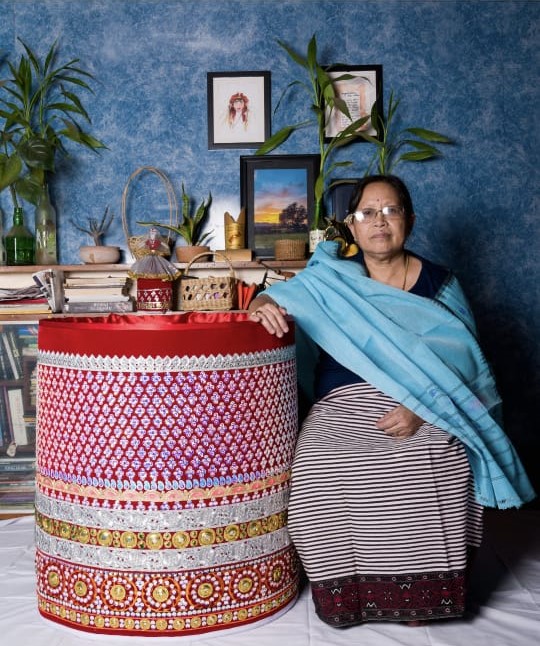
Will I do justice in sharing the story of my mother? Of late, I realized what hindered me from inking her long chronicle of wisdom and experiences shared with me since birth was that of procrastination inflicted by fear of prejudice. Unreasonably so, as I now accepted it. This is the story of not just my mother but of the legacy of an artwork shared by generations of artisans in a family. To do them justice is to bring their love and passion alive through this writing.
There is indeed an unavoidable pride when it comes to tracing the talent that went back to the days of glory, as one would pompously claim when we mention a name like Sanakhya Sanajaoba. He is none other than the one who created the first Potloi dress in Manipur inspired by the designs envisioned by Maharaja Bhagya Chandra (Meidingu Chingthangkhomba, 1748-1799). Potloi came into existence as a dance costume for the performance of Ras Leela in the Palace, a glittery skirt in style. Later introduced as a wedding dress, the skirt evolved into a more prominent form of attire with a unique shape. Intricate in design and excruciating in the effort, it was of monumental calibre to produce one piece of the dress back in the day. My mother remembers how it used to be. She said it all started with the pounding of Taothabi rice into flour and boiling it into a thick paste. This paste is applied as a glue to stick together 8 layers of khudei (traditional male loincloth) and dry within a day. No more, no less. Acute study of weather and sunshine for the day was crucial, as it cannot be kept in the open for long. After drying the layers, it was cut into the length of a Potloi with a pair of sharp scissors. Silk (now we use satin or suede) dyed in red or green was then used to cover the hard starchy surface. One might think, here ends the hard element but the test of one’s patience and endurance came into play when the artist worked with a needle to decorate the Potloi with kon made by the Konsam family. The larger portion of the potloi is covered with ‘kongon’ (sequin design) but it was the stitching of kon that makes a potloi unique. Back in the day, Konsam Family used to be the only artists that produce this ‘kon’ used in Potloi. It is the larger sequin made out of brass in a circular design. For the border, phiribi (Appliqué artisans), another group of artisans would contribute the ‘koi’ designs. The phiribi would cut out the design and a Potloi artist would stitch it into the lower border. My mother mentioned one Abok Bema of Naoremthong who she used to visit, waiting for the ‘koi’ at her house, an errand she performed for her mother. Abok Bema was a phenomenal phiribi artist. Being an artist who worked since the invention of the very costume, she was already a stooping-aged woman by the time my mother met her. It was a moment of an impatient passion of youth clashing with the slow and dragging ancient talent. My mother would jump in and help her in the cutting and Abok Bema can’t refuse but to teach her from time to time as they worked together. Thus, the skill sipped into a new generation.
Sanakhya Sanajaoba has many apprentices and amongst them is Ngangbam Tolapishak and Mangolnganbi, the couple who became a mentor to my young grandmother, Ngangbam Meema. She learned it from them in childhood but didn’t practice it as a profession until after her marriage. By profession, one must understand that a potloi artist is known only by his or her presence as a dresser during any occasion that required the potloi costume. It takes a whole new term of understanding and experience to dress a potloi. Thus, regardless of the many efforts contributed during the process of making a potloi, not many were known for the art except for the very few who could come out in the social event to dress the potloi where one can openly display their deal to the craft. And even in my mother’s time (the early 2000s), unmarried women were not encouraged to go out as potloi dressers. It was always the married adults who would take up that space. Younger artisans’ works were confined to the making process only. My grandmother did just that, spending her youth, dedicated to the craft.
After her marriage and subsequent divorce, Ngangbam Meema, my grandmother took up the profession as her means of earning. With years of experience since childhood, mentored by the best in her family, she excelled quickly in her art and went far and wide for it. My mother remembers how festivals like Goura Leela, Sanjenba etc were frequent and popular back in those days. For these festivals, my grandmother would travel as far as Wangu, Sugnu, Chairen etc to dress the Radhas and Goppies for the performances. She was in her early thirties at the time. A story of a young woman in far-off places, working for late hours doesn’t complete without the mention of the fear and trouble she used to face, be it discrimination or intimidation. Already perceived as a woman with questionable repute, she carried her scissor tugged in her khwangset (waistcloth) to defend herself from random drunkard men who used to give discomfort on her way back home. Despite the troubles, she made herself a shining artist and was conferred with State Award in 2005. She mentored many artisans during her time but the one to succeed in her panache was none other than her daughter. A shy little girl who chose housework over the school to take care of her younger siblings, Sumita Laitonjam (Potsangbam ongbi Sumita Devi), picked up her mother’s needle and began her first stitch from making dolls to sell on the festival to everything thereafter.
From our many conversations, what I feel about my mother is that she is a quick learner. Before she picked up a needle and the divorce of her parents, she also mentioned learning the art of making Kouna Phak in the neighbourhood of her father’s house in Kongba. She wasn’t mentored but learned by observing the many artisans there who were already famous for the craft. Who knows, if she continued to stay in Kongba, and my grandmother as a homemaker, she might have met an entirely different calling.
After the divorce of my grandparents, my mother moved to Singjamei and that is where my grandmother returned to her needle and potloi. Even though just thirteen years old, my mother said she was determined to earn her own pocket money or help her mother bear the household. As I mentioned earlier, she gain even more talent than my grandmother by learning appliqué art from Abok Bema of Naoremthong while running errands.
Back in the day, my mother said government officials used to go in search of artisans for government projects and events. On one such occasion, the Assistant Director of the then DC Handloom and Handicraft Department, Mr. AD Nath came to my mother’s house to interact with my grandmother. However, he was more impressed with my mother who was still a child yet dedicated and scrupulous in the art of making dolls and potloi. He recommended her for a Child Art Camp in New Delhi and thus she participated in the camp in 1982. There were certificate and photograph of the event but what she still remember most was the ‘falooda’ that the then Prime Minister, Smt. Indira Gandhi serve them in her residence when they visited her. It was her first time visiting the capital and left a lasting impression with everything new in it.
Just like my grandmother, my mother never went out to practice Potloi dresser as a profession. She just helped her mother create potloi at home and attend to the household. Her skills and talent would only serve her when she needed them the most in the later phase of her life. At the age of twenty-seven, she got married and gave birth to four daughters. I am her second child. After the birth of all my siblings, she was yet again thrown into a series of circumstances that led her to seek a means of earning. Her talent was waiting for her.
After nearly ten years of being a homebound wife, my mother took up Potloi dresser as a profession and began to appear for marriages and Ras Leelas. She created her potloi from scratch, as my grandmother was not willing to lend her the old ones. I believe it was a moment of test that my grandmother put her in to see if she was willing to dedicate herself to the art. It was with a proud smile when my mother told me about my stern grandmother who made her dress my sister as a trial before assigning her to one of her clients. Even though she always helped her in making potloi, my mother said she struggled when dressing a person up as it needed experience. My grandmother made her dress my sister countless times until she could do it with such expertise as if needed to be done blindfolded. My mother morphed into a version of my grandmother after a few years into the profession, traveling far and wide to earn and also to mentor several apprentices in far-off villages. She bagged her state award in 2010 and continued to work on government projects as a mentor for several workshops and craft meets. Facing surgery in 2013, she stopped working on potloi and projects for a few years and this inconvenience served her as an early involuntary retirement from a profession she valued deeply.
Potloi was a means of survival for these women in my family but to sit for hours; stitching every bead and sequin into the thick and hard surface; making sure not a speck of dust got into their way; traveling far and wide; making an elegant appearance to suit the occasions of their profession proved any onlookers of their undisputed passion for the art. To grow up watching them is to have faith in one’s talent as if gifted and give it our best. They have contributed tenfold for the craft to flourish what they earned out of their passion. While the world always changes at the fastest of paces, my mother does feel like she is no longer catching up with her olden talent. Festivals are no longer as grand as they used to be. Effort no longer served the interest and taste of the glam of the modern dawn. My mother modestly accepted that she should make peace with the changes yet leave the legacy alive for those who would one day come for the antique as human often does.
NB: The article was first published in the 1st Edition of HY News Monthly Magazine



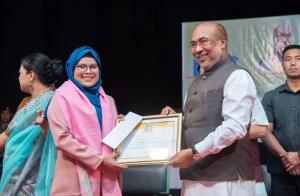




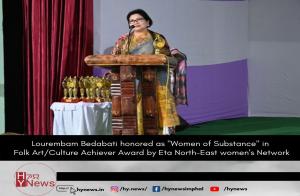
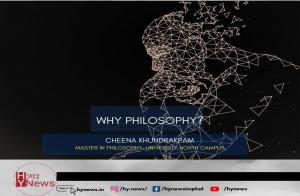
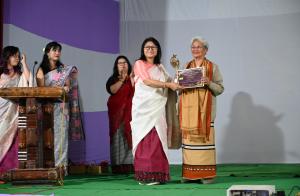
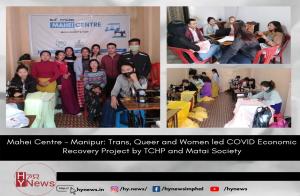
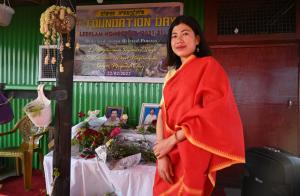









Leave Comments